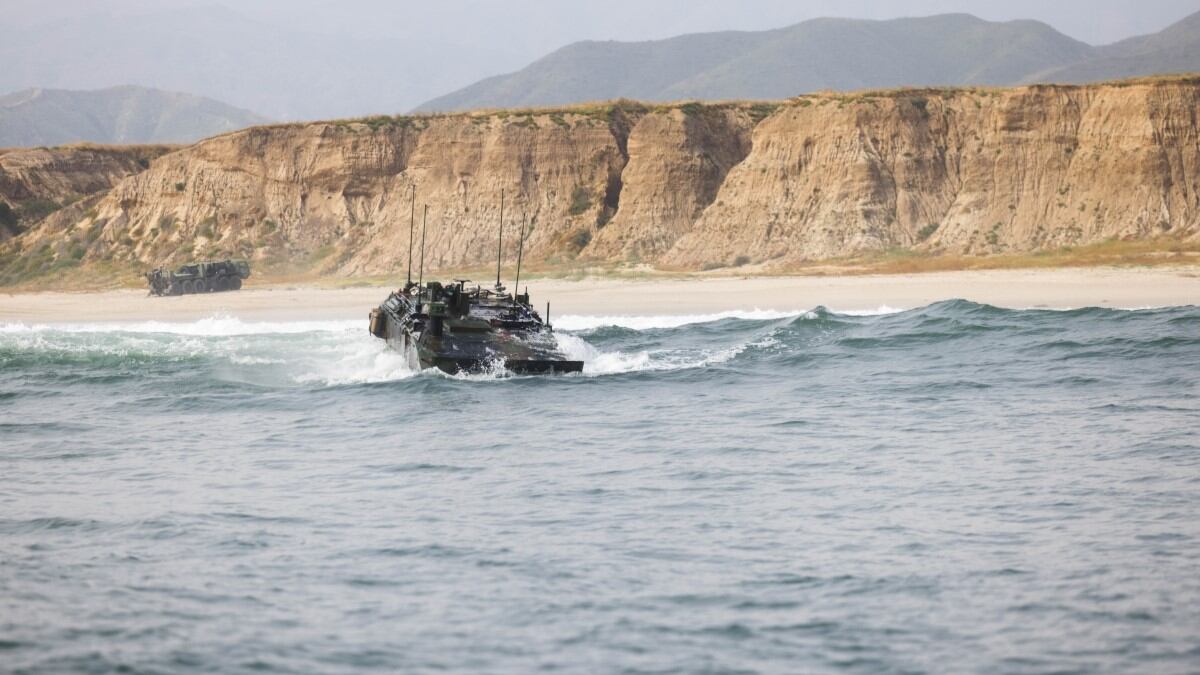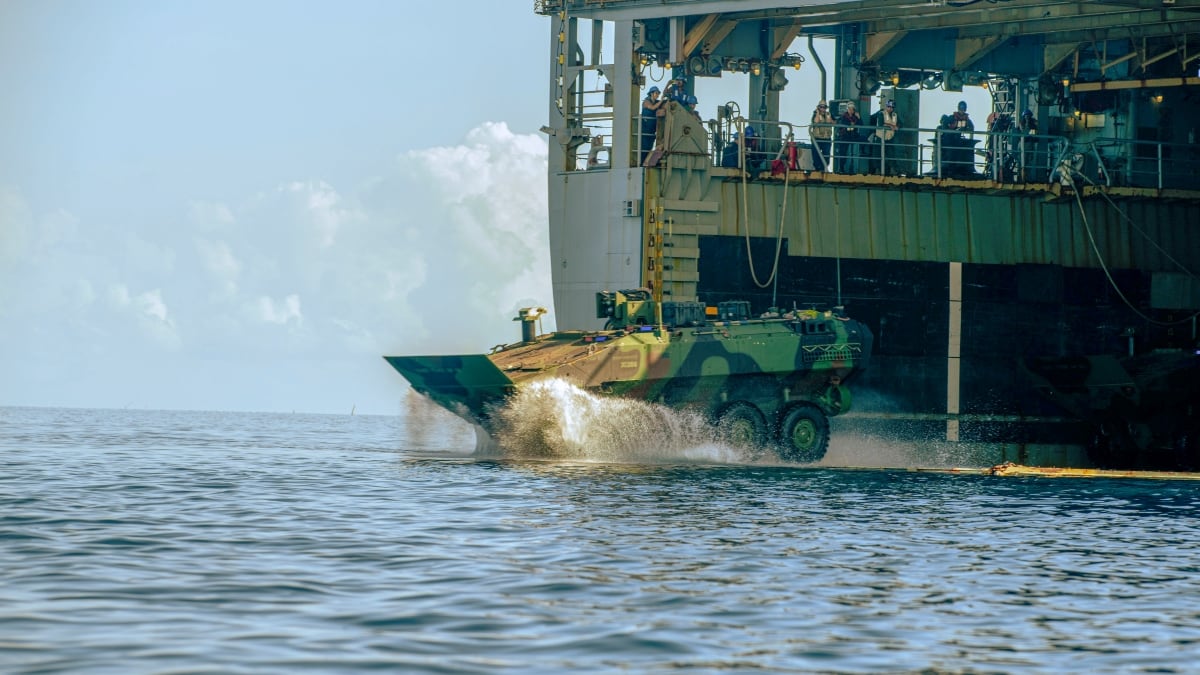The Marine Corps debuted its amphibious combat vehicles overseas, signaling the service believes it has resolved the training hiccups that previously had prompted it to restrict the vehicles’ operations.
The 15th Marine Expeditionary Unit’s amphibious combat vehicle platoon on Saturday conducted a live-fire exercise in Oyster Bay, Philippines, as the unit was deployed to the country for the massive bilateral exercise Balikatan.
Amphibious combat vehicles can emerge from an amphibious ships’ well deck, transport Marines through the waves and roll ashore. These capabilities make the vehicles a key part of how the Marine Corps, the military’s amphibious force, would launch amphibious assaults.
In the training exercise, the platoon launched the vehicles from the dock landing ship Harpers Ferry and formed into assault sections, according to a Marine Corps news release. Then the Marines approached and shot at targets ashore with their externally mounted Mk 19 40 mm grenade machine guns, controlled by remote weapons systems.
Instead of firing high-explosive grenades in the bay, the vehicles used 40 mm training rounds that mark targets with orange chalk, the release said.
After the exercise, the Marines and amphibious combat vehicles returned to the Harpers Ferry.
“The hard work and dedication of our Marines is what made today’s training successful,” Col. Sean Dynan, commanding officer of the 15th Marine Expeditionary Unit, said in the news release. “Today’s training is a proof of concept across the Marine Corps for successful ACV employment in its intended environment.”
The journey to getting the amphibious combat vehicle ready for overseas operations has been bumpy.
The amphibious combat vehicle is the replacement for the amphibious assault vehicle, the aging platform that Marines had used since the 1970s.
The newer vehicle is heavier and fitted with a V-shaped rather than flat hull to protect from underbody blasts. It is wheeled, rather than tracked, as its predecessor platform was.
In 2020, an amphibious assault vehicle sank off the coast of California, killing eight Marines and a sailor. The Corps ceased deploying amphibious assault vehicles in late 2021 amid the transition to the amphibious combat vehicle.
But from September 2021 to January 2022, the Marine Corps paused waterborne operations with the amphibious combat vehicle because of a problem with the tow rope.
After waterborne training resumed, a vehicle rollover in July 2022 prompted the Corps to suspend it again. The vehicles returned to the water in late September 2022, but a mishap a few weeks later led the service to cease most training with the vehicle in choppy waters.
The Marine Corps attributed these mishaps, in which no injuries were reported, to insufficient training on how the newer vehicle differed from its predecessor. After developing a new curriculum, it recertified operators and maintainers through a transition training unit at Camp Pendleton, California’s Assault Amphibian School.
In January, Assistant Commandant Gen. Christopher Mahoney announced the vehicles would deploy with the 15th Marine Expeditionary Unit in March.
Some elements of the unit, including the amphibious combat vehicle platoon, deployed aboard the Harpers Ferry on March 19, according to the news release. The amphibious transport dock Somerset has carried other Marines from the unit to the Philippines.
A third ship that is supposed to transport the unit’s remaining Marines, the amphibious assault ship Boxer, returned to San Diego for maintenance less than two weeks after it deployed.
Marines with the 15th Marine Expeditionary Unit are gathering insights related to the amphibious combat vehicles’ “employment, embarkation, maintenance requirements, logistics trains, and integration with our allies and partners,” the Marine Corps said in the news release.
In the summer, Marines based in Japan will receive their first amphibious combat vehicles, Col. Tim Hough, the Corps’ program manager for advanced amphibious assault, said May 1. BAE Systems has fielded 184 amphibious combat vehicles to the Corps, all of them to Camp Pendleton, California — the 15th Marine Expeditionary Unit’s home base.
RELATED

Twelve amphibious combat vehicles will arrive at the Okinawa, Japan-based 4th Marine Regiment in July, according to Hough.
“That’s important because now we’ll be in distinct geographical locations,” Hough said.
Irene Loewenson is a staff reporter for Marine Corps Times. She joined Military Times as an editorial fellow in August 2022. She is a graduate of Williams College, where she was the editor-in-chief of the student newspaper.





